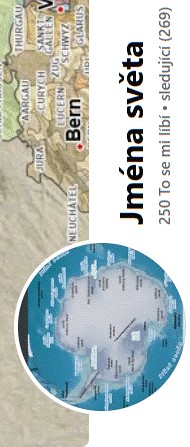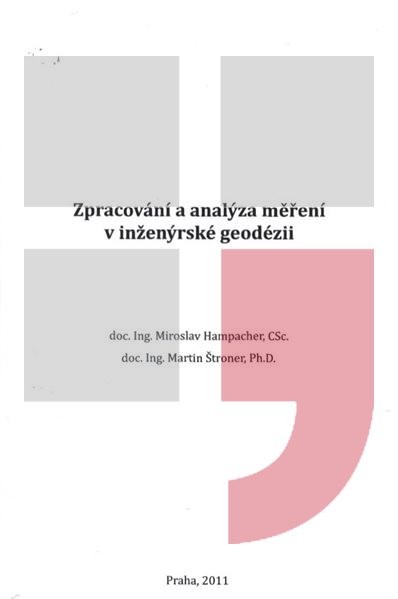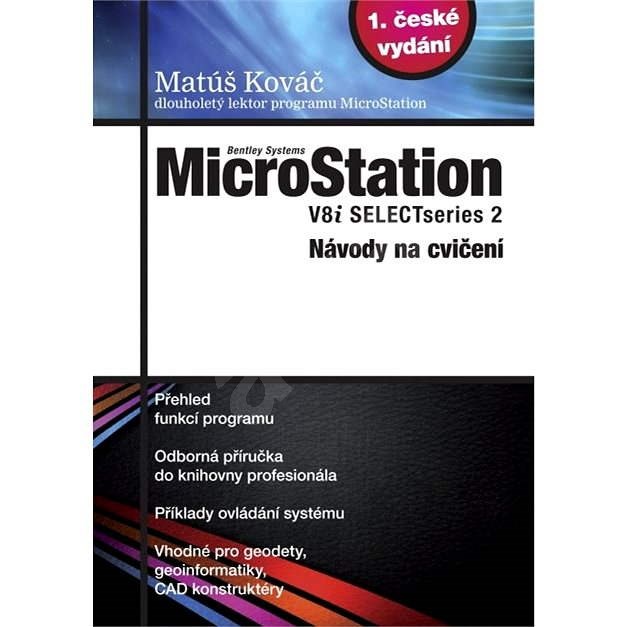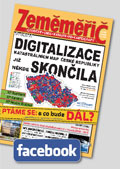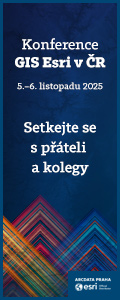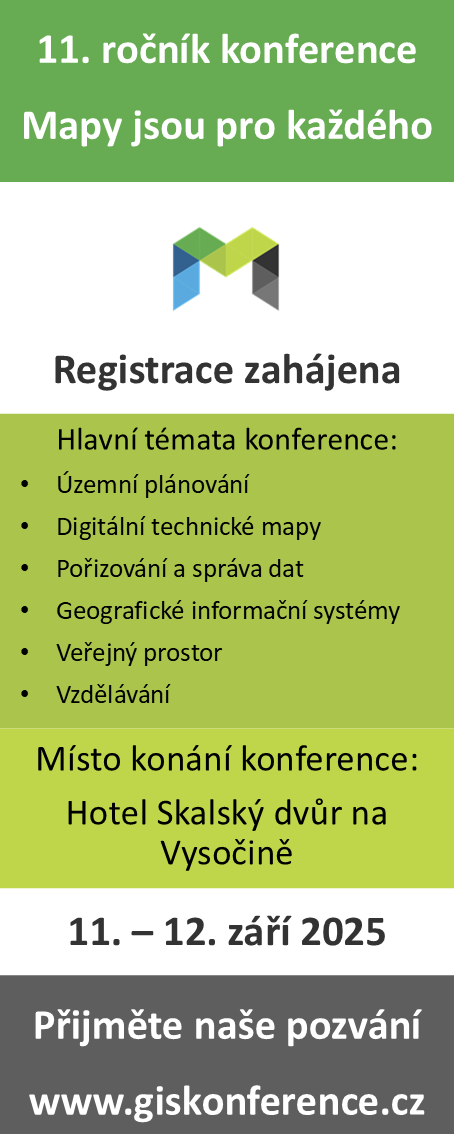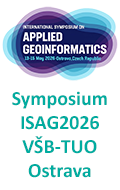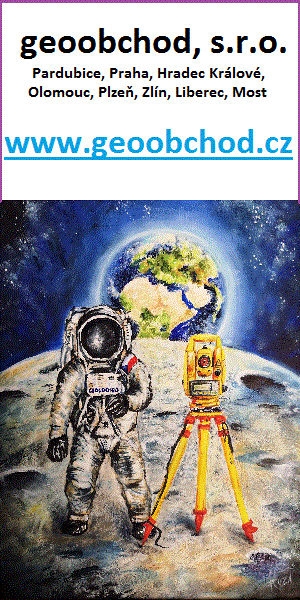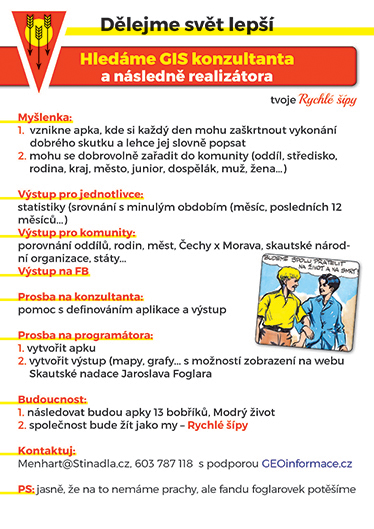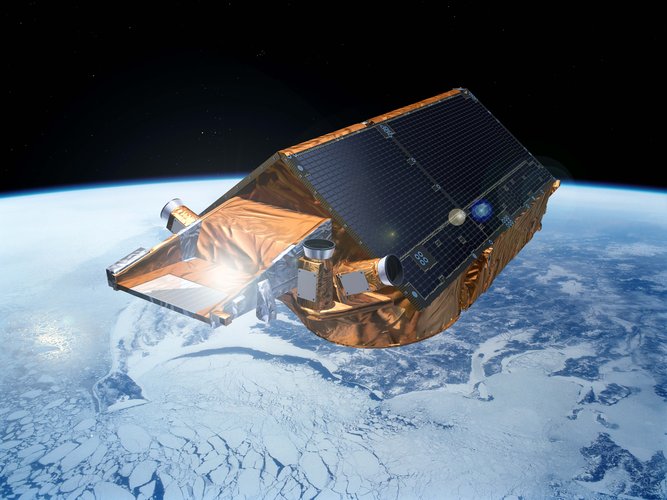zprávy
zdroje zpráv:Odborný referent/vrchní referent – poskytování informací a nahlížení do KN
27.11.2023 16:38 ČÚZK - volná místa Katastrální úřad pro hlavní město Prahu vypisuje výběrové řízení na místo Odborný referent/vrchní referent – poskytování informací a nahlížení do KNOdborný referent/vrchní referent – poskytování informací a nahlížení do KN
27.11.2023 16:38 ČÚZK /Urady/Katastralni-urady/Katastralni-urady/Katastralni-urad-pro-hlavni-mesto-Prahu/Uredni-deska/Oznameni-a-jina-uredni-sdeleni/Volna-mista/Odborny-referent-vrchni-referent-–-poskytovani-(1)20231127 - volné místo - Rada/odborný rada v oddělení aktualizace a dokumentace KN KP Most
27.11.2023 14:57 ČÚZK - předpisy a opatření Katastrální úřad pro Ústecký kraj - Katastrální pracoviště Most zveřejnil novou aktualitu: Nabídka volného místa - Rada / odborný rada v oddělení aktualizace a dokumentace katastru nemovitostí KP Most20231127 - volné místo - Rada/odborný rada v oddělení aktualizace a dokumentace KN KP Most
27.11.2023 14:57 ČÚZK /Urady/Katastralni-urady/Katastralni-urady/Katastralni-urad-pro-Ustecky-kraj/Katastralni-pracoviste/KP-Most/O-uradu/Aktuality/20231127-volne-misto-Rada-odborny-rada-v-oddeleni-20231127 - volné místo - Rada/odborný rada v oddělení aktualizace a dokumentace KN KP Most
27.11.2023 14:54 ČÚZK - předpisy a opatření Katastrální úřad pro Ústecký kraj - Katastrální pracoviště Most zveřejnil novou aktualitu: Nabídka volného místa - Rada / odborný rada v oddělení aktualizace a dokumentace katastru nemovitostí KP Most20231127 - volné místo - Rada/odborný rada v oddělení aktualizace a dokumentace KN KP Most
27.11.2023 14:54 ČÚZK /Urady/Katastralni-urady/Katastralni-urady/Katastralni-urad-pro-Ustecky-kraj/O-uradu/Aktuality/20231127-volne-misto-Rada-odborny-rada-v-oddeleni-Rada / odborný rada v oddělení aktualizace a dokumentace katastru nemovitostí KP Most
27.11.2023 14:48 ČÚZK /Urady/Katastralni-urady/Katastralni-urady/Katastralni-urad-pro-Ustecky-kraj/Uredni-deska/Oznameni-a-jina-uredni-sdeleni/Volna-mista/DMS/Rada-odborny-rada-v-oddeleni-aktualizace-a-dokumenRada / odborný rada v oddělení aktualizace a dokumentace katastru nemovitostí KP Most
27.11.2023 14:48 ČÚZK - volná místa Katastrální úřad pro Ústecký kraj Katastrální pracoviště Most vypisuje výběrové řízení na místo Rada / odborný rada v oddělení aktualizace a dokumentace katastru nemovitostí KP MostRada / odborný rada v oddělení aktualizace a dokumentace katastru nemovitostí KP Most
27.11.2023 14:48 ČÚZK - předpisy a opatření Katastrální úřad pro Ústecký kraj Katastrální pracoviště Mostvypisuje výběrové řízení na místo
Rada / odborný rada v oddělení aktualizace a dokumentace katastru nemovitostí KP Most
20231127-VŘ KP Brno
27.11.2023 12:57 ČÚZK - aktuality v resortu Oznámení o vyhlášení výběrového řízení na obsazení služebního místa ředitele/ ředitelky Katastrálního pracoviště Brno-město.20231127-VŘ KP Brno
27.11.2023 12:57 ČÚZK - předpisy a opatření Český úřad zeměměřický a katastrální zveřejnil novou aktualitu: Oznámení o vyhlášení výběrového řízení na obsazení služebního místa ředitele/ ředitelky Katastrálního pracoviště Brno-město.Vrchní referent/rada v oddělení aktualizace GI KN na Katastrálním pracovišti Brno - město
27.11.2023 11:50 ČÚZK - volná místa Katastrální úřad pro Jihomoravský kraj Katastrální pracoviště Brno-město vypisuje výběrové řízení na místo Vrchní referent/rada v oddělení aktualizace GI KN na Katastrálním pracovišti Brno - městoVrchní referent/rada v oddělení aktualizace GI KN na Katastrálním pracovišti Brno - město
27.11.2023 11:50 ČÚZK /Urady/Katastralni-urady/Katastralni-urady/Katastralni-urad-pro-Jihomoravsky-kraj/Uredni-deska/Oznameni-a-jina-uredni-sdeleni/Volna-mista/DMS/Vrchni-referent-rada-v-oddeleni-aktualizace-GI-KN-Vrchní referent/rada v oddělení aktualizace GI KN na Katastrálním pracovišti Brno - město
27.11.2023 11:50 ČÚZK - předpisy a opatření Katastrální úřad pro Jihomoravský kraj Katastrální pracoviště Brno-městovypisuje výběrové řízení na místo
Vrchní referent/rada v oddělení aktualizace GI KN na Katastrálním pracovišti Brno - město
Pozvánka na školení z oborů CAD/CAM, strojírenství, výroba
27.11.2023 10:06 Arkance SystemsVyužijte novou nabídku kurzů Autodesk Fusion, AutoCAD a Inventor od společnosti ARKANCE. Povyšte vaše znalosti.
Zpráva Pozvánka na školení z oborů CAD/CAM, strojírenství, výroba pochází z arkance-systems.cz.
Nefunkční telefony
27.11.2023 8:33 ČÚZK - předpisy a opatření Katastrální úřad pro Středočeský kraj - Katastrální pracoviště Rakovníkzveřejnil novou aktualitu: Z důvodu instalace nové telefonní ústředny bude omezeno telefonní spojení s naším pracovištěm a to ve dnech 28.-29.11.2023!
Nefunkční telefony
27.11.2023 8:33 ČÚZK /Urady/Katastralni-urady/Katastralni-urady/Katastralni-urad-pro-Stredocesky-kraj/Katastralni-pracoviste/KP-Rakovnik/O-uradu/Aktuality/Nefunkcni-telefonyRada/odborný rada - ředitel/ka Katastrálního pracoviště Brno - město
27.11.2023 8:33 ČÚZK /Urady/Katastralni-urady/Katastralni-urady/Katastralni-urad-pro-Jihomoravsky-kraj/Uredni-deska/Oznameni-a-jina-uredni-sdeleni/Volna-mista/DMS/Rada-odborny-rada-reditel-ka-Katastralniho-pracoviRada/odborný rada - ředitel/ka Katastrálního pracoviště Brno - město
27.11.2023 8:33 ČÚZK - volná místa Katastrální úřad pro Jihomoravský kraj Katastrální pracoviště Brno-město vypisuje výběrové řízení na místo Rada/odborný rada - ředitel/ka Katastrálního pracoviště Brno - městoRada/odborný rada - ředitel/ka Katastrálního pracoviště Brno - město
27.11.2023 8:33 ČÚZK - předpisy a opatření Katastrální úřad pro Jihomoravský kraj Katastrální pracoviště Brno-městovypisuje výběrové řízení na místo
Rada/odborný rada - ředitel/ka Katastrálního pracoviště Brno - město
9. ročník UAV workshopu zaměřeného na použití dronů pro mapování lesních ekosystémů (pozvánka)
27.11.2023 8:11 GISportal.cz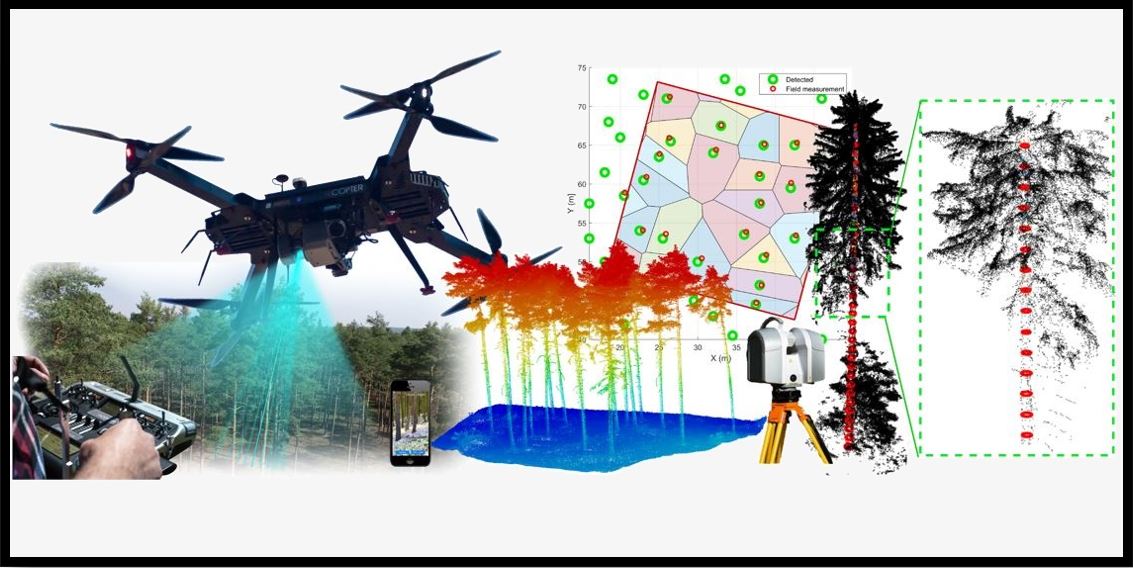
Katedra hospodářské úpravy lesů zve na 9. ročník UAV workshopu zaměřeného na použití dronů pro mapování lesních ekosystémů. Účast pro studenty je bezplatná. Přihlášení je možné na následujícím odkazu: https://www.uavforestry.cz/?page_id=630
The post 9. ročník UAV workshopu zaměřeného na použití dronů pro mapování lesních ekosystémů (pozvánka) appeared first on GISportal.cz.
Vrchní referent/rada – vedení katastrální mapy
27.11.2023 7:49 ČÚZK - volná místa Katastrální úřad pro Moravskoslezský kraj Katastrální pracoviště Ostrava vypisuje výběrové řízení na místo Vrchní referent/rada – vedení katastrální mapyVrchní referent/rada – vedení katastrální mapy
27.11.2023 7:49 ČÚZK - předpisy a opatření Katastrální úřad pro Moravskoslezský kraj Katastrální pracoviště Ostravavypisuje výběrové řízení na místo
Vrchní referent/rada – vedení katastrální mapy
Odstávka elektřiny v pondělí 27.11.2023
24.11.2023 19:12 ČÚZK /Urady/Katastralni-urady/Katastralni-urady/Katastralni-urad-pro-Moravskoslezsky-kraj/Katastralni-pracoviste/KP-Ostrava/O-uradu/Aktuality/Odstavka-elektriny-v pondeli-27-11-2023Odstávka elektřiny v pondělí 27.11.2023
24.11.2023 19:12 ČÚZK - předpisy a opatření Český úřad zeměměřický a katastrální zveřejnil novou aktualitu: Vážení klienti.Z důvodů odstávky elektřiny v pondělí 27.11.2023 od 8:00 do 9:00 nebude funkční informační systém katastru nemovitostí.
Příjem podání nebude v tomto čase omezen, platba bude možná pouze v hotovosti.
DAEX DESIGN Plus 24
24.11.2023 15:50 ŠPINAR - softwareNová verze DAEX DESIGN Professional 24 s akčními bonusy !
The post DAEX DESIGN Plus 24 appeared first on ŠPINAR – software.
DAEX DESIGN Plus 24
24.11.2023 15:50 ŠPINAR - software Nová verze DAEX DESIGN Professional 24 s akčními bonusy !Starý za nový Trimble TDC650
24.11.2023 13:39 GeotronicsJedinečná nabídka výměny pro všechny, kteří vlastní staré GPS přijímače Trimble.
The post Starý za nový Trimble TDC650 first appeared on GEOTRONICS Praha.
Starý za nový Trimble TDC650
24.11.2023 13:39 GeotronicsJedinečná nabídka výměny pro všechny, kteří vlastní staré GPS přijímače Trimble.
The post Starý za nový Trimble TDC650 first appeared on GEOTRONICS Praha.
Oznámení o vyhlášení výběrového řízení na doplňkové služební místo odborný referent / vrchní referen
24.11.2023 12:53 ČÚZK - předpisy a opatření Katastrální úřad pro Pardubický kraj Katastrální pracoviště Svitavyvypisuje výběrové řízení na místo
Oznámení o vyhlášení výběrového řízení na doplňkové služební místo odborný referent / vrchní referent v oddělení dokumentace katastru nemovitostí Katastrálního pracoviště Svitavy
Oznámení o vyhlášení výběrového řízení na doplňkové služební místo odborný referent / vrchní referen
24.11.2023 12:53 ČÚZK - volná místa Katastrální úřad pro Pardubický kraj Katastrální pracoviště Svitavy vypisuje výběrové řízení na místo Oznámení o vyhlášení výběrového řízení na doplňkové služební místo odborný referent / vrchní referenOznámení o vyhlášení výběrového řízení na doplňkové služební místo odborný referent / vrchní referen
24.11.2023 12:53 ČÚZK /Urady/Katastralni-urady/Katastralni-urady/Katastralni-urad-pro-Pardubicky-kraj/Uredni-deska/Oznameni-a-jina-uredni-sdeleni/Volna-mista/DMS/Oznameni-o-vyhlaseni-vyberoveho-rizeni-na-doplnkovOznámení o vyhlášení výběrového řízení na služební místo odborný referent / vrchní referent v odděle
24.11.2023 12:50 ČÚZK - volná místa Katastrální úřad pro Pardubický kraj Katastrální pracoviště Chrudim vypisuje výběrové řízení na místo Oznámení o vyhlášení výběrového řízení na služební místo odborný referent / vrchní referent v odděleOznámení o vyhlášení výběrového řízení na služební místo odborný referent / vrchní referent v odděle
24.11.2023 12:50 ČÚZK - předpisy a opatření Katastrální úřad pro Pardubický kraj Katastrální pracoviště Chrudimvypisuje výběrové řízení na místo
Oznámení o vyhlášení výběrového řízení na služební místo odborný referent / vrchní referent v oddělení aktualizace katastru nemovitostí Katastrálního pracoviště Chrudim
Oznámení o vyhlášení výběrového řízení na služební místo odborný referent / vrchní referent v odděle
24.11.2023 12:50 ČÚZK /Urady/Katastralni-urady/Katastralni-urady/Katastralni-urad-pro-Pardubicky-kraj/Uredni-deska/Oznameni-a-jina-uredni-sdeleni/Volna-mista/DMS/Oznameni-o-vyhlaseni-vyberoveho-rizeni-na-sluz-(1)Výstražná stávka 27.11.2023
24.11.2023 12:37 ČÚZK - předpisy a opatření Katastrální úřad pro Pardubický kraj - Katastrální pracoviště Chrudim zveřejnil novou aktualitu: Z důvodu připojení se k jednohodinové výstražné stávce vyhlášené Českomoravskou konfederací odborových svazů bude Katastrální pracoviště Chrudim dne 27.11.2023 v době od 12:00 do 13:00 uzavřeno. Veškerá podání je v této době možno vkládat do schránky v zádveří.Ing. Miroslav Kumstýř
Ředitel Katastrálního pracoviště Chrudim
Výstražná stávka 27.11.2023
24.11.2023 12:37 ČÚZK /Urady/Katastralni-urady/Katastralni-urady/Katastralni-urad-pro-Pardubicky-kraj/Katastralni-pracoviste/KP-Chrudim/O-uradu/Aktuality/Vystrazna-stavka-27-11-2023Výstražná stávka 27.11.2023
24.11.2023 12:37 ČÚZK - předpisy a opatření Katastrální úřad pro Pardubický kraj - Katastrální pracoviště Chrudim zveřejnil novou aktualitu: Z důvodu připojení se k jednohodinové výstražné stávce vyhlášené Českomoravskou konfederací odborových svazů bude Katastrální pracoviště Chrudim dne 27.11.2023 v době od 12:00 do 13:00 uzavřeno. Veškerá podání je v této době možno vkládat do schránky v zádveří.Ing. Miroslav Kumstýř
Ředitel Katastrálního pracoviště Chrudim
Výstražná stáva - leták
EGNOS and Galileo User Satisfaction Survey 2023 is open, and we want to hear from you!
24.11.2023 11:11 European GNSS Agency
Continuing from the combined survey model launched last year, this multiple-choice survey only takes a few minutes to complete but your contribution can have a huge impact on the future performance of EGNOS and Galileo.
"Through our User Satisfaction Survey 2023, we are empowering industries to shape the future of EGNOS and GALILEO. From assessing new features to gauging usefulness, every opinion counts,” recalled Carmen Aguilera, Operational Market Development Manager at EUSPA.
Market segment questions tailored to your industry
The survey is designed to tailor questions to suit you or your company by assessing specific market segments. Choose from one or multiple market segments such as maritime and inland waterways, surveying and mapping, location-based services (e.g. smartphones, IoT), agriculture, rail, and more. You will be then asked some simple questions based on your chosen market segments and you are done!
This year, the Galileo part of the survey also includes questions on satisfaction on the High Accuracy Service (HAS), a new service implemented in January 2023 and HAS and Open Service Navigation Message Authentication (OSNMA) reports. The EGNOS part of the survey covers all EGNOS services and the usefulness of notifications of outages and degradation. Current non-users are also welcome to take the survey and report their past experiences with compatibility or performance.
See how easy it is for yourself and take the User Satisfaction Survey 2023.
The deadline to answer is End of February 2024.
Results
The results of the survey will be compiled into a survey report and will be available in 2024.
Last year’s user performance report for EGNOS is now available. Galileo user reports (2022 report available soon) can be found here.
Media note: This feature can be republished without charge provided the European Union Agency for the Space Programme (EUSPA) is acknowledged as the source at the top or the bottom of the story. You must request permission before you use any of the photographs on the site. If you republish, we would be grateful if you could link back to the EUSPA website (http://www.euspa.europa.eu).
Earth from Space: Salty lakes
24.11.2023 10:00 ESA Observing the Earth Image:
The Copernicus Sentinel-2 mission captures the colourful waters of two salty lakes in East Africa: Lake Natron in northern Tanzania and Lake Magadi in southern Kenya.
Image:
The Copernicus Sentinel-2 mission captures the colourful waters of two salty lakes in East Africa: Lake Natron in northern Tanzania and Lake Magadi in southern Kenya.
Připojení ke stávce
24.11.2023 9:21 ČÚZK /Urady/Katastralni-urady/Katastralni-urady/Katastralni-urad-pro-Pardubicky-kraj/Katastralni-pracoviste/KP-Usti-nad-Orlici/O-uradu/Aktuality/Pripojeni-ke-stavcePřipojení ke stávce
24.11.2023 9:21 ČÚZK - předpisy a opatření Katastrální úřad pro Pardubický kraj - Katastrální pracoviště Ústí nad Orlicí zveřejnil novou aktualitu: Připojení k hodinové výstražné stávce Z důvodu připojení se k jednohodinové výstražné stávce proti konsolidačnímu balíčku vyhlášené Českomoravskou konfederací odborových svazů bude Katastrální pracoviště Ústí nad Orlicí dne 27.11.2023 v době od 12:00 do 13:00 uzavřeno. Veškerá podání je v této době možno vkládat do schránky ve vestibulu.Další informace naleznete v příloze.
Za případné komplikace se předem omlouváme.
Ing. Daniel Králík
Ředitel Katastrálního pracoviště Ústí nad Orlicí
Schválená dokumentace JVF DTM 1.4.3
23.11.2023 15:27 ZeměměřičČeský úřad zeměměřický a katastrální informoval, že dne 22. listopadu 2023 byla Koordinační radou správců DMVS a DTM schválena dokumentace k nové verzi JVF DTM 1.4.3. Oproti návrhu došlo v jednotlivých součástech k několika drobným úpravám, úřad tedy doporučuje vycházet ze schváleného stavu dokumentace. Dříve ČÚZK informoval, že s nasazením této verze dokumentace na produkční prostředí se počítá v průběhu prvního čtvrtletí roku 2024. […]
The post Schválená dokumentace JVF DTM 1.4.3 appeared first on Zeměměřič.
When Finance Manager met openBIM …
23.11.2023 12:44 buildingSMART.orgI’ve worked at buildingSMART for 9 years now and can say with some confidence that I’m pretty good at what I do. Don’t get me wrong, there’s always room for…
The post When Finance Manager met openBIM … appeared first on buildingSMART International.
When Finance Manager met openBIM…
23.11.2023 12:44 buildingSMART.orgI’ve worked at buildingSMART for 9 years now and can say with some confidence that I’m pretty good at what I do. Don’t get me wrong, there’s always room for…
The post When Finance Manager met openBIM… appeared first on buildingSMART International.
Spire joins ESA's Third Party Mission Programme
23.11.2023 11:54 ESA Observing the Earth
Spire joins ESA's Third Party Mission Programme
Schválená dokumentace JVF DTM 1.4.3
23.11.2023 10:40 ČÚZK - předpisy a opatření Český úřad zeměměřický a katastrální informuje, že dne 22. listopadu 2023 byla Koordinační radou správců DMVS a DTM schválena dokumentace k nové verzi JVF DTM 1.4.3. Oproti návrhu došlo v jednotlivých součástech k několika drobným úpravám, doporučujeme tedy vycházet ze schváleného stavu dokumentace, který je vystaven v záložce JVF DTM. Jak již bylo dříve uvedeno, s nasazením této verze na produkční prostředí se počítá v průběhu prvního čtvrtletí roku 2024, termín bude upřesněn.rada / odborný rada v oddělení právních vztahů k nemovitostem Katastrálního pracoviště Trutnov
23.11.2023 10:27 ČÚZK - volná místa Katastrální úřad pro Královéhradecký kraj Katastrální pracoviště Trutnov vypisuje výběrové řízení na místo rada / odborný rada v oddělení právních vztahů k nemovitostem Katastrálního pracoviště Trutnovrada / odborný rada v oddělení právních vztahů k nemovitostem Katastrálního pracoviště Trutnov
23.11.2023 10:27 ČÚZK - předpisy a opatření Katastrální úřad pro Královéhradecký kraj Katastrální pracoviště Trutnovvypisuje výběrové řízení na místo
rada / odborný rada v oddělení právních vztahů k nemovitostem Katastrálního pracoviště Trutnov
rada / odborný rada v oddělení právních vztahů k nemovitostem Katastrálního pracoviště Trutnov
23.11.2023 10:27 ČÚZK /Urady/Katastralni-urady/Katastralni-urady/Katastralni-urad-pro-Kralovehradecky-kraj/Uredni-deska/Oznameni-a-jina-uredni-sdeleni/Volna-mista/DMS/rada-odborny-rada-v-oddeleni-pravnich-vztahu-k-nemOdborný rada - právník v právním odd. VIII
22.11.2023 16:11 ČÚZK /Urady/Katastralni-urady/Katastralni-urady/Katastralni-urad-pro-hlavni-mesto-Prahu/O-uradu/Aktuality/Odborny-rada-pravnik-v-pravnim-odd-VIIIOdborný rada - právník v právním odd. VIII
22.11.2023 16:11 ČÚZK - předpisy a opatření Katastrální úřad pro hlavní město Prahu zveřejnil novou aktualitu: Ředitelka úřadu vyhlašuje výběrové řízení na služební místo:Odborný rada - právník v právním odd. VIII
Odborný rada - právník v právním odd. VIII
22.11.2023 16:08 ČÚZK - předpisy a opatření Katastrální úřad pro hlavní město Prahuvypisuje výběrové řízení na místo
Odborný rada - právník v právním odd. VIII
Odborný rada - právník v právním odd. VIII
22.11.2023 16:08 ČÚZK /Urady/Katastralni-urady/Katastralni-urady/Katastralni-urad-pro-hlavni-mesto-Prahu/Uredni-deska/Oznameni-a-jina-uredni-sdeleni/Volna-mista/Odborny-rada-pravnik-v-pravnim-odd-VIIIOdborný rada - právník v právním odd. VIII
22.11.2023 16:08 ČÚZK - volná místa Katastrální úřad pro hlavní město Prahu vypisuje výběrové řízení na místo Odborný rada - právník v právním odd. VIIIKrátka správa č. 52/2023
22.11.2023 11:26 Komora geodetů a kartografů SRThe post Krátka správa č. 52/2023 appeared first on Komora geodetov a kartografov.
Krátka správa č. 51/2023
22.11.2023 11:18 Komora geodetů a kartografů SRThe post Krátka správa č. 51/2023 appeared first on Komora geodetov a kartografov.
Krátka správa č. 50/2023
22.11.2023 11:16 Komora geodetů a kartografů SRThe post Krátka správa č. 50/2023 appeared first on Komora geodetov a kartografov.
Krátka správa č. 49/2023
22.11.2023 11:14 Komora geodetů a kartografů SRThe post Krátka správa č. 49/2023 appeared first on Komora geodetov a kartografov.
Krátka správa č. 48/2023
22.11.2023 11:09 Komora geodetů a kartografů SRThe post Krátka správa č. 48/2023 appeared first on Komora geodetov a kartografov.
20231122 - volné místo - Odborný/vrchní referent v odd. akt. a dokument. KN KP Chomutov na KÚ pro ÚK
22.11.2023 10:49 ČÚZK /Urady/Katastralni-urady/Katastralni-urady/Katastralni-urad-pro-Ustecky-kraj/Katastralni-pracoviste/KP-Chomutov/O-uradu/Aktuality/20231122-volne-misto-Odborny-vrchni-referent-v-odd20231122 - volné místo - Odborný/vrchní referent v odd. akt. a dokument. KN KP Chomutov na KÚ pro ÚK
22.11.2023 10:49 ČÚZK - předpisy a opatření Katastrální úřad pro Ústecký kraj - Katastrální pracoviště Chomutov zveřejnil novou aktualitu: Nabídka volného místa - Odborný / vrchní referent v oddělení aktualizace a dokumentace katastru nemovitostí KP Chomutov na KÚ pro Ústecký kraj20231122 - volné místo - Odborný/vrchní referent v odd. akt. a dokument. KN KP Chomutov na KÚ pro ÚK
22.11.2023 10:44 ČÚZK /Urady/Katastralni-urady/Katastralni-urady/Katastralni-urad-pro-Ustecky-kraj/O-uradu/Aktuality/20231122-volne-misto-Odborny-vrchni-referent-v-odd20231122 - volné místo - Odborný/vrchní referent v odd. akt. a dokument. KN KP Chomutov na KÚ pro ÚK
22.11.2023 10:44 ČÚZK - předpisy a opatření Katastrální úřad pro Ústecký kraj - Katastrální pracoviště Chomutov zveřejnil novou aktualitu: Nabídka volného místa - Odborný / vrchní referent v oddělení aktualizace a dokumentace katastru nemovitostí KP Chomutov pro Ústecký krajOdborný / vrchní referent v oddělení aktualizace a dokumentace katastru nemovitostí KP Chomutov na K
22.11.2023 10:35 ČÚZK /Urady/Katastralni-urady/Katastralni-urady/Katastralni-urad-pro-Ustecky-kraj/Uredni-deska/Oznameni-a-jina-uredni-sdeleni/Volna-mista/DMS/Odborny-vrchni-referent-v-oddeleni-aktualizace-a-dOdborný / vrchní referent v oddělení aktualizace a dokumentace katastru nemovitostí KP Chomutov na K
22.11.2023 10:35 ČÚZK - volná místa Katastrální úřad pro Ústecký kraj Katastrální pracoviště Chomutov vypisuje výběrové řízení na místo Odborný / vrchní referent v oddělení aktualizace a dokumentace katastru nemovitostí KP Chomutov na KOdborný / vrchní referent v oddělení aktualizace a dokumentace katastru nemovitostí KP Chomutov na K
22.11.2023 10:35 ČÚZK - předpisy a opatření Katastrální úřad pro Ústecký kraj Katastrální pracoviště Chomutovvypisuje výběrové řízení na místo
Odborný / vrchní referent v oddělení aktualizace a dokumentace katastru nemovitostí KP Chomutov na KÚ pro Ústecký kraj
Výběrové řízení na KP Havlíčkův Brod
22.11.2023 9:25 ČÚZK - předpisy a opatření Katastrální úřad pro Vysočinu - Katastrální pracoviště Havlíčkův Brod zveřejnil novou aktualitu: Výběrové řízení na služební místo vrchní referent/rada - oddělení aktualizace KN II - Katastrálního pracoviště Havlíčkův Brod.Výběrové řízení na KP Havlíčkův Brod
22.11.2023 9:25 ČÚZK /Urady/Katastralni-urady/Katastralni-urady/Katastralni-urad-pro-Vysocinu/O-uradu/Aktuality/Vyberove-rizeni-na-KP-Havlickuv-BrodUnlocking Europe’s satellite navigation potential at NAVISP Industry Days
22.11.2023 9:23 ESA Navigation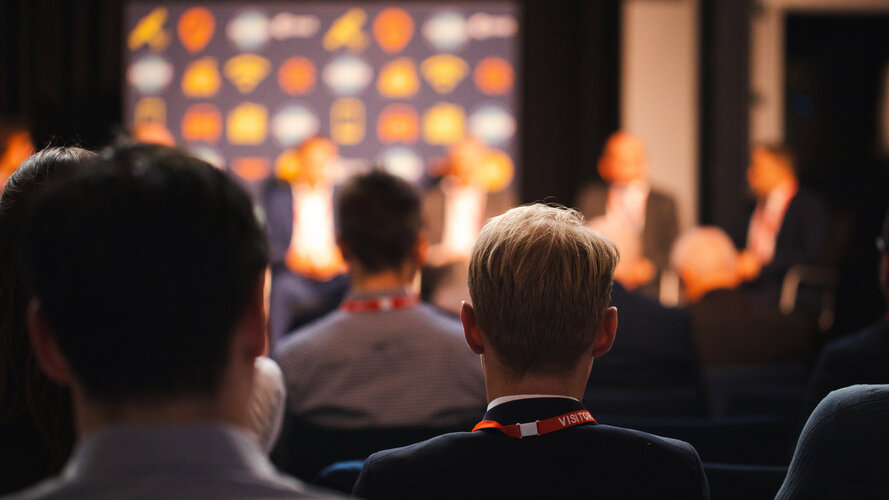
Leading positioning, navigation and timing experts from companies and research institutions across Europe met last week at ESA’s NAVISP Industry Days, a two-day workshop dedicated to discussing trends and opportunities in this field.
Vrchní referent-rada - aktualizace KN II KP Havlíčkův Brod
22.11.2023 8:43 ČÚZK /Urady/Katastralni-urady/Katastralni-urady/Katastralni-urad-pro-Vysocinu/Uredni-deska/Oznameni-a-jina-uredni-sdeleni/Volna-mista/DMS/Vrchni-referent-rada-aktualizace-KN-II-KP-HavlickuVrchní referent-rada - aktualizace KN II KP Havlíčkův Brod
22.11.2023 8:43 ČÚZK - volná místa Katastrální úřad pro Vysočinu Katastrální pracoviště Havlíčkův Brod vypisuje výběrové řízení na místo Vrchní referent-rada - aktualizace KN II KP Havlíčkův BrodVrchní referent-rada - aktualizace KN II KP Havlíčkův Brod
22.11.2023 8:43 ČÚZK - předpisy a opatření Katastrální úřad pro Vysočinu Katastrální pracoviště Havlíčkův Brodvypisuje výběrové řízení na místo
Vrchní referent-rada - aktualizace KN II KP Havlíčkův Brod
Technická odstávka Portálu ESKN
21.11.2023 21:45
ÚGKK SR
Úrad geodézie, kartografie a katastra SR v snahe vylepšiť svoje služby bude realizovať aktualizáciu informačných systémov. Z tohto dôvodu je potrebné kvôli lepšej funkčnosti portálov ESKN urobiť TECHNICKÚ ODSTÁVKU. Dňa 24.11.2023 (piatok) od 18:00 hod. do 27.11.2023 (pondelok) do 12:00 hod. bude technická odstávka elektronických služieb katastra nehnuteľností, nakoľko bude realizovaná aktualizácia infraštruktúry systému Elektronických služieb katastra nehnuteľností.
#PortálESKN #od:24.11.2023@18:00 #do:27.11.2023@12:00
Webinář - Správa kusovníku a vlastností o sestavě pro Fusion 360
21.11.2023 14:18 Adeon
Zaregistrujte se na náš plánovaný webinář, na kterém vám předvedeme několik tipů a triků jak efektivně pracovat kusovníkem a vlastnostmi […]
The post Webinář - Správa kusovníku a vlastností o sestavě pro Fusion 360 appeared first on Adeon CZ.
Webinář - Správa kusovníku a vlastností o sestavě pro Fusion 360
21.11.2023 14:18 Adeon
Zaregistrujte se na náš plánovaný webinář, na kterém vám předvedeme několik tipů a triků jak efektivně pracovat kusovníkem a vlastnostmi […]
The post Webinář - Správa kusovníku a vlastností o sestavě pro Fusion 360 appeared first on Adeon CZ.
odborný referent/vrchní referent - návrh zápisu v katastru v oddělení dokumentace KN KP Písek (ID SM
21.11.2023 13:45 ČÚZK /Urady/Katastralni-urady/Katastralni-urady/Katastralni-urad-pro-Jihocesky-kraj/Uredni-deska/Oznameni-a-jina-uredni-sdeleni/Volna-mista/DMS/odborny-referent-vrchni-referent-navrh-zapisu-v-kaodborný referent/vrchní referent - návrh zápisu v katastru v oddělení dokumentace KN KP Písek (ID SM
21.11.2023 13:45 ČÚZK - volná místa Katastrální úřad pro Jihočeský kraj Katastrální pracoviště Písek vypisuje výběrové řízení na místo odborný referent/vrchní referent - návrh zápisu v katastru v oddělení dokumentace KN KP Písek (ID SModborný referent/vrchní referent - návrh zápisu v katastru v oddělení dokumentace KN KP Písek (ID SM
21.11.2023 13:45 ČÚZK - předpisy a opatření Katastrální úřad pro Jihočeský kraj Katastrální pracoviště Písekvypisuje výběrové řízení na místo
odborný referent/vrchní referent - návrh zápisu v katastru v oddělení dokumentace KN KP Písek (ID SM 30000248/30003872)
Projekt Get It Sorted úspěšně předán - tisková zpráv
21.11.2023 13:24 T-MAPYThe post Projekt Get It Sorted úspěšně předán - tisková zpráv appeared first on T-MAPY spol. s r.o..
Projekt Get It Sorted úspěšně předán - tisková zpráva
21.11.2023 13:24 T-MAPYThe post Projekt Get It Sorted úspěšně předán - tisková zpráva appeared first on T-MAPY spol. s r.o..
Projekt Get It Sorted úspěšně předán
21.11.2023 13:24 T-MAPYThe post Projekt Get It Sorted úspěšně předán appeared first on T-MAPY spol. s r.o..
20231121 - volné místo - vrchní referent/rada v odd. hosp. správy kanceláře ředitele KÚ na KÚ pro UK
21.11.2023 13:18 ČÚZK - předpisy a opatření Katastrální úřad pro Ústecký kraj zveřejnil novou aktualitu: Nabídka volného pracovního místa - Vrchní referent / rada v oddělení hospodářské správy kanceláře ředitele KÚ na KÚ pro Ústecký kraj20231121 - volné místo - vrchní referent/rada v odd. hosp. správy kanceláře ředitele KÚ na KÚ pro UK
21.11.2023 13:18 ČÚZK /Urady/Katastralni-urady/Katastralni-urady/Katastralni-urad-pro-Ustecky-kraj/O-uradu/Aktuality/20231121-volne-misto-vrchni-referent-rada-v-odd-ho20231121 - volné místo - vrchní referent/rada v odd. hosp. správy kanceláře ředitele KÚ na KÚ pro UK
21.11.2023 13:18 ČÚZK - předpisy a opatření Katastrální úřad pro Ústecký kraj zveřejnil novou aktualitu: Nabídka volného pracovního místa - Vrchní referent / rada v oddělení hospodářské správy kanceláře ředitele KÚ na KÚ pro Ústecký krajVrchní referent / rada v oddělení hospodářské správy kanceláře ředitele KÚ na KÚ pro Ústecký kraj
21.11.2023 13:03 ČÚZK - volná místa Katastrální úřad pro Ústecký kraj kancelář ředitele vypisuje výběrové řízení na místo Vrchní referent / rada v oddělení hospodářské správy kanceláře ředitele KÚ na KÚ pro Ústecký krajVrchní referent / rada v oddělení hospodářské správy kanceláře ředitele KÚ na KÚ pro Ústecký kraj
21.11.2023 13:03 ČÚZK - předpisy a opatření Katastrální úřad pro Ústecký kraj kancelář ředitelevypisuje výběrové řízení na místo
Vrchní referent / rada v oddělení hospodářské správy kanceláře ředitele KÚ na KÚ pro Ústecký kraj
Vrchní referent / rada v oddělení hospodářské správy kanceláře ředitele KÚ na KÚ pro Ústecký kraj
21.11.2023 13:03 ČÚZK /Urady/Katastralni-urady/Katastralni-urady/Katastralni-urad-pro-Ustecky-kraj/Uredni-deska/Oznameni-a-jina-uredni-sdeleni/Volna-mista/DMS/Vrchni-referent-rada-v-oddeleni-hospodarske-spravyCairt and Wivern Earth Explorer candidates go forward
21.11.2023 12:52 ESA Observing the Earth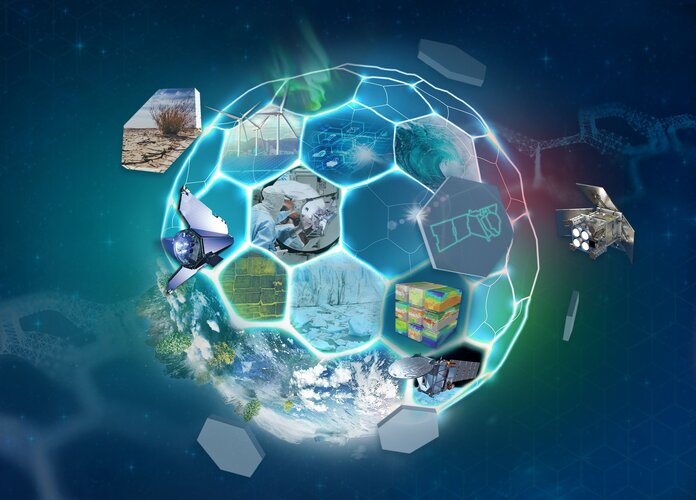
ESA has reached a significant milestone in its commitment towards a deeper understanding of Earth's dynamic processes and addressing pressing environmental challenges with the selection of two new candidates – Cairt and Wivern – to progress to the next development phase as part of the process of realising the Agency’s eleventh Earth Explorer satellite mission.
Vrchní referent/rada v oddělení obnovy katastrálního operátu č.3 na Technické sekci
21.11.2023 12:47 ČÚZK - předpisy a opatření Katastrální úřad pro Jihomoravský kraj technická sekcevypisuje výběrové řízení na místo
Vrchní referent/rada v oddělení obnovy katastrálního operátu č.3 na Technické sekci
Vrchní referent/rada v oddělení obnovy katastrálního operátu č.3 na Technické sekci
21.11.2023 12:47 ČÚZK - volná místa Katastrální úřad pro Jihomoravský kraj technická sekce vypisuje výběrové řízení na místo Vrchní referent/rada v oddělení obnovy katastrálního operátu č.3 na Technické sekciVrchní referent/rada v oddělení obnovy katastrálního operátu č.3 na Technické sekci
21.11.2023 12:47 ČÚZK /Urady/Katastralni-urady/Katastralni-urady/Katastralni-urad-pro-Jihomoravsky-kraj/Uredni-deska/Oznameni-a-jina-uredni-sdeleni/Volna-mista/DMS/Vrchni-referent-rada-v-oddeleni-obnovy-katastr-(1)Omezený telefonický kontakt
21.11.2023 11:52 ČÚZK - předpisy a opatření Katastrální úřad pro Středočeský kraj - Katastrální pracoviště Kolín zveřejnil novou aktualitu:Omezený telefonický kontakt Dobrý den,Ve dnech 22.11.2023 a 23.12.2023 bude omezen telefonický kontakt kvůli prováděným úpravám na telefonické ústředně.
Pro dotazy lze využít emailovou adresu: kp.kolin@cuzk.cz
Děkujeme za pochopení
Omezený telefonický kontakt
21.11.2023 11:52 ČÚZK /Urady/Katastralni-urady/Katastralni-urady/Katastralni-urad-pro-Stredocesky-kraj/Katastralni-pracoviste/KP-Kolin/O-uradu/Aktuality/Omezeny-telefonicky-kontaktodborný referent - Katastrální pracoviště Moravské Budějovice
21.11.2023 10:59 ČÚZK /Urady/Katastralni-urady/Katastralni-urady/Katastralni-urad-pro-Vysocinu/O-uradu/Aktuality/odborny-referent-Katastralni-pracoviste-Moravske-Bodborný referent - Katastrální pracoviště Moravské Budějovice
21.11.2023 10:59 ČÚZK - předpisy a opatření Katastrální úřad pro Vysočinu - Katastrální pracoviště Moravské Budějovice zveřejnil novou aktualitu: Výběrové řízení na služební místo odborný referent - Katastrální pracoviště Moravské Budějovice.Pracovník/pracovnice vztahů k veřejnosti + Telefonista/ka
21.11.2023 10:16 Zeměměřický úřad Zeměměřický úřadvypisuje výběrové řízení na místo
Pracovník/pracovnice vztahů k veřejnosti + Telefonista/ka
Pracovník/pracovnice vztahů k veřejnosti + Telefonista/ka
21.11.2023 10:16 ČÚZK - předpisy a opatření Zeměměřický úřadvypisuje výběrové řízení na místo
Pracovník/pracovnice vztahů k veřejnosti + Telefonista/ka
Pracovník/pracovnice vztahů k veřejnosti + Telefonista/ka
21.11.2023 10:16 ČÚZK - volná místa Zeměměřický úřad vypisuje výběrové řízení na místo Pracovník/pracovnice vztahů k veřejnosti + Telefonista/kaPracovník/pracovnice vztahů k veřejnosti + Telefonista/ka
21.11.2023 10:16 ČÚZK /Urady/Zememericky-urad/Volna-mista/DMS/Pracovnik-pracovnice-vztahu-k-verejnosti-TelefonisOdborný referent - KP Moravské Budějovice
21.11.2023 10:08 ČÚZK - volná místa Katastrální úřad pro Vysočinu Katastrální pracoviště Moravské Budějovice vypisuje výběrové řízení na místo Odborný referent - KP Moravské BudějoviceOdborný referent - KP Moravské Budějovice
21.11.2023 10:08 ČÚZK /Urady/Katastralni-urady/Katastralni-urady/Katastralni-urad-pro-Vysocinu/Uredni-deska/Oznameni-a-jina-uredni-sdeleni/Volna-mista/DMS/Odborny-referent-KP-Moravske-BudejoviceOdborný referent - KP Moravské Budějovice
21.11.2023 10:08 ČÚZK - předpisy a opatření Katastrální úřad pro Vysočinu Katastrální pracoviště Moravské Budějovicevypisuje výběrové řízení na místo
Odborný referent - KP Moravské Budějovice
Autodesk cyber week u ARKANCE – sleva až 25 % na oblíbené produkty
21.11.2023 0:00 Arkance SystemsCyber Week je tady! Pořiďte si CAD, CAM, BIM nebo multimédia software od Autodesku za zvýhodněné ceny.
Zpráva Autodesk cyber week u ARKANCE – sleva až 25 % na oblíbené produkty pochází z arkance-systems.cz.
Autodesk Cyber Week u ARKANCE – sleva až 25 % na oblíbené produkty
21.11.2023 0:00 Arkance SystemsCyber Week je tady! Pořiďte si CAD, CAM, BIM nebo multimédia software od Autodesku za zvýhodněné ceny.
Zpráva Autodesk Cyber Week u ARKANCE – sleva až 25 % na oblíbené produkty pochází z arkance-systems.cz.
BLACK FRIDAY Autodesk licencí
21.11.2023 0:00 Adeon
V rámci světového oblíbeného slevového svátku Black Friday pro vás Autodesk přichystal nikoliv jeden den slev, ale rovnou celý týden […]
The post BLACK FRIDAY Autodesk licencí appeared first on Adeon CZ.
BLACK FRIDAY Autodesk licencí
21.11.2023 0:00 Adeon
V rámci světového oblíbeného slevového svátku Black Friday pro vás Autodesk přichystal nikoliv jeden den slev, ale rovnou celý týden […]
The post BLACK FRIDAY Autodesk licencí appeared first on Adeon CZ.
EUSPA Open Days 2023, where space becomes more than space
20.11.2023 16:51 European GNSS Agency
The EUSPA Open Days offer the public an opportunity to learn about and experience applications based on the EU Space Programme and its components, Galileo, EGNOS, Copernicus, GOVSATCOM/IRIS2 and SSA.
This year we invite you to our Prague headquarters from 1 to 2 December 2023
Hop on Galileo-enabled trams: 6, 8, 12, 17, 25, 1 and get off at Strossmayerovo Náměstí or take a ride down the metro line C and stop at Vltavska.
What to expect?
- Unique insights into the agency’s work
- An immersive Copernicus exhibition which will make your social media feed blow up
- Discover our approach to space debris management
- Fun learning opportunities for youngsters or adults wanting to experience childlike playfulness
- Exciting seminars, space workshops, competitions, and prizes
- Discussions with EUSPA experts about career or space entrepreneurship opportunities
"EUSPA Open Days is our agency’s signature event specifically conceived for the general public to highlight the role of EU Space Programme as well our agency, in the lives of Europeans," says EUSPA Executive Director, Rodrigo da Costa. "I look forward to welcoming you!"
Stay tuned for more information and keep an eye on our EUSPA Open Days 2023 page.
We are looking forward to welcoming you onboard!
Media note: This feature can be republished without charge provided the European Union Agency for the Space Programme (EUSPA) is acknowledged as the source at the top or the bottom of the story. You must request permission before you use any of the photographs on the site. If you republish, we would be grateful if you could link back to the EUSPA website (http://www.euspa.europa.eu).
EUSPA Open Days 2023, where space becomes more than space
20.11.2023 16:51 European GNSS Agency
The EUSPA Open Days offer the public an opportunity to learn about and experience applications based on the EU Space Programme and its components, Galileo, EGNOS, Copernicus, GOVSATCOM/IRIS2 and SSA.
This year, our Prague headquarters will be open to all on 1 December from 4.00 pm to 6.00 pm and on 2 December 2023 from 9.00 am to 6.00 pm.
Hop on Galileo-enabled trams: 6, 8, 12, 17, 25, 1 and get off at Strossmayerovo Náměstí or take a ride down the metro line C and stop at Vltavska.
What to expect?
- Unique insights into the agency’s work
- An immersive Copernicus exhibition which will make your social media feed blow up
- Discover our approach to space debris management
- Fun learning opportunities for youngsters or adults wanting to experience childlike playfulness
- Exciting seminars, space workshops, competitions, and prizes
- Discussions with EUSPA experts about career or space entrepreneurship opportunities
"EUSPA Open Days is our agency’s signature event specifically conceived for the general public to highlight the role of EU Space Programme as well our agency, in the lives of Europeans," says EUSPA Executive Director, Rodrigo da Costa. "I look forward to welcoming you!"
Stay tuned for more information and keep an eye on our EUSPA Open Days 2023 page.
We are looking forward to welcoming you!
Media note: This feature can be republished without charge provided the European Union Agency for the Space Programme (EUSPA) is acknowledged as the source at the top or the bottom of the story. You must request permission before you use any of the photographs on the site. If you republish, we would be grateful if you could link back to the EUSPA website (http://www.euspa.europa.eu).
EUSPA Open Days 2023, where space becomes more than space
20.11.2023 16:51 European GNSS Agency
The EUSPA Open Days offer the public an opportunity to learn about and experience applications based on the EU Space Programme and its components, Galileo, EGNOS, Copernicus, GOVSATCOM/IRIS2 and SSA.
This year, our Prague headquarters will be open to all on 1 December from 4.00 pm to 6.00 pm and on 2 December 2023 from 9.00 am to 6.00 pm.
Hop on Galileo-enabled trams: 6, 8, 12, 17, 25, 1 and get off at Strossmayerovo Náměstí or take a ride down the metro line C and stop at Vltavska.
What to expect?
- Unique insights into the agency’s work
- An immersive Copernicus exhibition which will make your social media feed blow up
- Discover our approach to space debris management
- Fun learning opportunities for youngsters or adults wanting to experience childlike playfulness
- Exciting seminars, space workshops, competitions, and prizes
- Discussions with EUSPA experts about career or space entrepreneurship opportunities
"EUSPA Open Days is our agency’s signature event specifically conceived for the general public to highlight the role of EU Space Programme as well our agency, in the lives of Europeans," says EUSPA Executive Director, Rodrigo da Costa. "I look forward to welcoming you!"
Stay tuned for more information and keep an eye on our EUSPA Open Days 2023 page.
We are looking forward to welcoming you!
Read in Czech
Media note: This feature can be republished without charge provided the European Union Agency for the Space Programme (EUSPA) is acknowledged as the source at the top or the bottom of the story. You must request permission before you use any of the photographs on the site. If you republish, we would be grateful if you could link back to the EUSPA website (http://www.euspa.europa.eu).
EUSPA Open Days 2023, where space becomes more than space
20.11.2023 16:51 European GNSS Agency
The EUSPA Open Days offer the public an opportunity to learn about and experience applications based on the EU Space Programme and its components, Galileo, EGNOS, Copernicus, GOVSATCOM/IRIS2 and SSA.
This year, our Prague headquarters will be open to all on 1 December from 4.00 pm to 6.00 pm and on 2 December 2023 from 9.00 am to 6.00 pm.
Hop on Galileo-enabled trams: 6, 8, 12, 17, 25, 1 and get off at Strossmayerovo Náměstí or take a ride down the metro line C and stop at Vltavska.
What to expect?
- Unique insights into the agency’s work
- An immersive Copernicus exhibition which will make your social media feed blow up
- Discover our approach to space debris management
- Fun learning opportunities for youngsters or adults wanting to experience childlike playfulness
- Exciting seminars, space workshops, competitions, and prizes
- Discussions with EUSPA experts about career or space entrepreneurship opportunities
"EUSPA Open Days is our agency’s signature event specifically conceived for the general public to highlight the role of EU Space Programme as well our agency, in the lives of Europeans," says EUSPA Executive Director, Rodrigo da Costa. "I look forward to welcoming you!"
Stay tuned for more information and keep an eye on our EUSPA Open Days 2023 page.
We are looking forward to welcoming you!
Media note: This feature can be republished without charge provided the European Union Agency for the Space Programme (EUSPA) is acknowledged as the source at the top or the bottom of the story. You must request permission before you use any of the photographs on the site. If you republish, we would be grateful if you could link back to the EUSPA website (http://www.euspa.europa.eu).
Arctic Weather Satellite in shape
20.11.2023 15:44 ESA Observing the Earth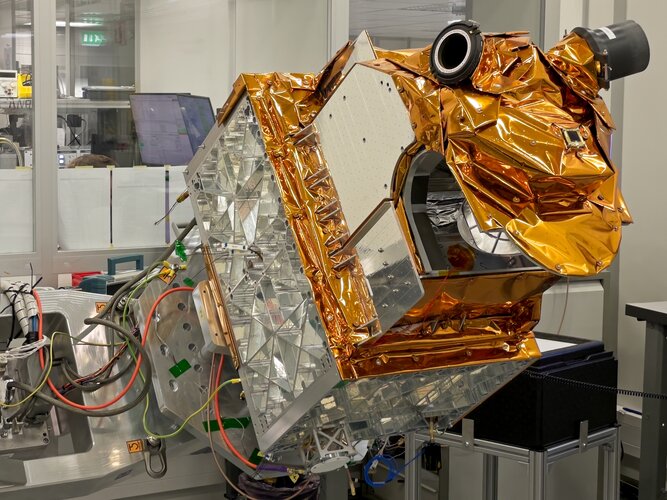
Embracing the New Space approach, it has taken just 36 months to develop and build ESA’s Arctic Weather Satellite. Now complete, this remarkable microsatellite has been shipped from OHB in Sweden to Germany where it is starting a series of tests to make sure that it will survive liftoff next year and its subsequent life in orbit.
Účetní ekonomicko-správního oddělení
20.11.2023 14:45 ČÚZK /Urady/Katastralni-urady/Katastralni-urady/Katastralni-urad-pro-Liberecky-kraj/Volna-mista/DMS/Ucetni-ekonomicko-spravniho-oddeleniÚčetní ekonomicko-správního oddělení
20.11.2023 14:45 ČÚZK - předpisy a opatření Katastrální úřad pro Liberecký kraj kancelář ředitelevypisuje výběrové řízení na místo
Účetní ekonomicko-správního oddělení
Účetní ekonomicko-správního oddělení
20.11.2023 14:45 ČÚZK - volná místa Katastrální úřad pro Liberecký kraj kancelář ředitele vypisuje výběrové řízení na místo Účetní ekonomicko-správního odděleníZkrácení otevírací doby [Knihovna geografie, byTopic]
20.11.2023 12:10 Katedra aplikované geoinformatiky a kartografie Přf UK ve středu 22. listopadu. Knihovna geografie bude otevřena pouze do 16:00.Novinky v aplikaci Geoprohlížeč
20.11.2023 10:00 ČÚZK - Geoportál Novinky v aplikaci GeoprohlížečByla publikována nová verze aplikace obsahující tato vylepšení funkcí:
Rozšířené možnosti výběru polygonu pro funkci "Export dat".
Je možné převzít právě označený prvek s otevřeným vyskakovacím oknem. V mapovém okně stačí kliknout například na polygon katastrálního území nebo klad listů a při volbě funkce "Exportovat data" v "Seznamu vrstev" zvolit v rozšířených možnostech "Převzít označenou geometrii".
Podpora připojení služeb vektorových dlaždic.
Do aplikace lze nyní přidat externí službu vektorových dlaždic publikovaných z ArcGIS serveru.
Službě je možné nastavit vlastní styly pomocí publikovaného JSON souboru (možnosti vrstvy v "Seznamu vrstev").
Vylepšené ovládání widgetu "Výpis souřadnic bodu".
Po najetí myší na řádek výsledku se zobrazí EPSG souřadnicového systému, pro lepší orientaci mezi výsledky.
Spolehlivější sdílení vlastní webové mapy.
Funkce sdílení webové mapy je nyní spolehlivější při vyšším počtu položek v "Seznamu vrstev".
Lze sdílet i vektorové dlaždice s nastaveným stylem.
Novinky v aplikaci Geoprohlížeč
20.11.2023 10:00 ČÚZK - Geoportál Novinky v aplikaci GeoprohlížečByla publikována nová verze aplikace obsahující tato vylepšení funkcí:
Rozšířené možnosti výběru polygonu pro funkci "Export dat".
Je možné převzít právě označený prvek s otevřeným vyskakovacím oknem. V mapovém okně stačí kliknout například na polygon katastrálního území nebo klad listů a při volbě funkce "Exportovat data" v "Seznamu vrstev" zvolit v rozšířených možnostech "Převzít označenou geometrii".
Podpora připojení služeb vektorových dlaždic.
Do aplikace lze nyní přidat externí službu vektorových dlaždic publikovaných z ArcGIS serveru.
Službě je možné nastavit vlastní styly pomocí publikovaného JSON souboru (možnosti vrstvy v "Seznamu vrstev").
Vylepšené ovládání widgetu "Výpis souřadnic bodu".
Po najetí myší na řádek výsledku se zobrazí EPSG souřadnicového systému, pro lepší orientaci mezi výsledky.
Spolehlivější sdílení vlastní webové mapy.
Funkce sdílení webové mapy je nyní spolehlivější při vyšším počtu položek v "Seznamu vrstev".
Lze sdílet i vektorové dlaždice s nastaveným stylem.



